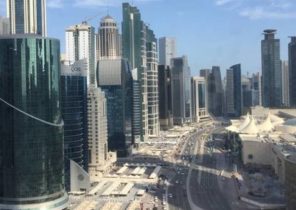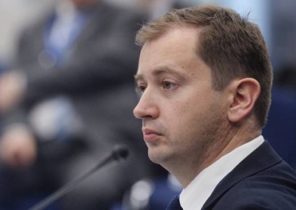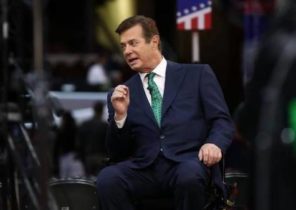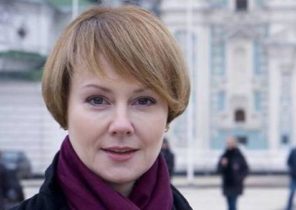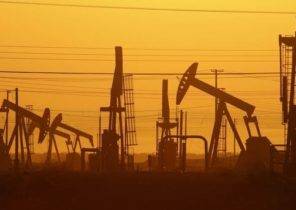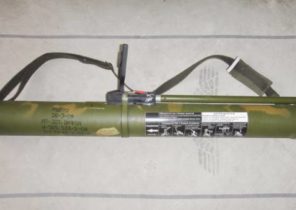
MOSCOW — the Coming year does not promise essential shocks the ruble, on the contrary, the current set of factors and market expectations plays in the future on the side of the Russian currency as a possible attempt of the Russian leadership to avoid the presidential election in 2018 instability in the foreign exchange market, which is always unnerving the Russian electorate.
However, even with positive trends, the ruble is unlikely to repeat its historical records of the year (last week of December plus 20% against the dollar and 26% in tandem with the Euro) as the main factor of support and influence, the growth of oil though and may continue next year, but in General is slowing down, rather tending to stability in the emerging bands after the reaction at the conclusion of the Covenant on limitation of production. The last days of Brent trying to find a balance near $55 per barrel.
OIL IS OUR EVERYTHING
In late November, OPEC agreed to reduce production from 1 January 2017 to 1.2 million barrels per day, and in December to the agreement has been joined by several countries outside the cartel will cut production by about 0.6 million. The expectations of these agreements, and the reaction to them has largely contributed to the growth of oil from multi-year lows the beginning of the year by 45% by the end of December.
Remain risks of non-compliance of the Covenant and the possibility of its compensation by increasing the production of American producers.
“The trend in the ruble will continue to be oil, let the degree of dependency and decreased slightly in 2016. At the same time, without significant increase in cost of raw materials the rouble is unlikely to have notable growth potential, because the account balance remains more or less balanced at lower current account surplus”, — considers Dmitry Field of ING Bank Eurasia.
According to Denis Davydov from Nordea Bank, the upward trend for the ruble to the current time is almost exhausted:
“The further marked rise in oil prices is not obvious, while the balance of payments, the budget question is still are challenges.”
“Everything will depend on oil, but under other equal conditions, the ruble may continue to grow in the first quarter of next year,” said Oleg Kuzmin of Renaissance Capital.
Starting from the possible dynamics of oil, he predicts the pair dollar/ruble of 58.00 in the price of oil is 60 dollars per barrel and Brent 63,50 — at a price of $ 50 per barrel, but 70,00 rubles to the dollar by reducing the cost of Brent to $ 40 per barrel.
“On the horizon next year, the recovery in oil prices and risk appetite in global markets will continue to provide support to the Russian currency, however, in a significant strengthening of the ruble, we are not laid,” said Michael Poddubsky of PSB.
He predicts that most of the next year, the pair dollar/rouble will be in the range of 58.00-of 66.00, and the average annual dollar exchange rate could reach 62 of the ruble.
“We expect the average ruble rate against the dollar at 62,50 in 2017”, — said Alexei Pogorelov from Credit Suisse, suggesting the stability of the ruble during the year.
Mr miklashevskii of Danske Bank a year sees the dollar close 59,60 of the ruble, but by the end of the first quarter does not exclude the strengthening of the American currency to 62.40. While positive, the share of ruble factors he calls the decline in external debt of Russian banks and corporations, and, though slowly, but the ongoing de-dollarization of the economy.
Evgeny Koshelev of ROSBANK also implies the growth of the dollar against the ruble in the first quarter, but to 65-66 roubles with the subsequent decrease to the level of 63.00 per dollar by the end of the year, calling among the factors that can play against the ruble, a recovery in consumer and investment imports.
Ruble records of the year were not supported by a change in the Russian economy in the direction of growth may reflect the largely speculative nature of the strengthening of the ruble and strong dependence on fluctuations of oil.
However, Kuzmin of Renaissance Capital, saw the support of the Russian ruble is not so much from the dynamics of oil prices, how many from reduction of capital outflow:
“In 2016-2017, the capital outflow from Russia will amount to less than $ 30 billion in total, while in 2014-2015 from Russia has flowed 190 billion dollars.”
The outflow of capital has declined, including because of lower volume of payments on external debt, the decrease of “gray” schemes of withdrawal of funds abroad and on-shore, associated with Western sanctions and Russian responses to them, and also, perhaps, with the tightening of the fight against corruption in Russia.
EXTERNAL FACTORS
At stake remains the foreign factor in the first place, the behavior of the administration of the President of the United States Donald trump in General and the attitude of the new us authorities for sanctions against Russia in particular. The intrigue remains, and the prospects of EU sanctions in the event of a change of the authorities in Germany and France at right populist forces, in General, negatively perceived the EU sanctions against Russia.
According to Vladimir Miklashevsky of Danske Bank, the lifting of sanctions will be a positive surprise for the ruble, increasing the medium exchange rate of the Russian currency against the U.S. dollar up to 7%. However, the analyst Danske are not waiting for their withdrawal next year.
“We want to believe that Russia has passed the worst stage of geopolitical tensions with the West and we can expect a gradual exit from political and economic isolation. This does not mean that the differences between Russia and Western countries will disappear, but we hope that the new pragmatic approach will help reach a compromise solution,” said Alexei Pogorelov from Credit Suisse.
On the other hand, negative consequences for the ruble could become the implementation of economic incentive programs Donald trump, fraught with growth of inflation and more rapid fed tightening U.S. — global demand for the dollar has increased after the us presidential elections. The fed is subject to a General improvement in the U.S. economy increased in December 2016 key rate in the dollar, leaving the door open for three promotions in 2017.
Koshelev of ROSBANK warns that fed policy is not taken into account by the market in full, as many expect the programme of action of trump, “and in the case of a sharp easing of fiscal policy in the United States, the correction under the three fed rate hikes in 2017 will have a negative impact on em currencies and the ruble.”
However, miklashevskii of Danske believes that in comparison with other developing currencies in such a situation, the ruble will suffer less than others, as external debt of Russian banks and enterprises continued to decline, and de-dollarization of the economy slowly continues.
“Given that the external debt of the Russian Federation for the past two years significantly decreased, the position of the Russian Federation, as we think, markedly different from other developing countries for the better” — I agree Polevoy from ING, pending no significant negative effect of fed policies.
THE STEPS OF THE CENTRAL BANK
During 2017 can narrow the positive interest rate differential of the ruble and the dollar in light of the expected bi-directional steps of the CBR and the Federal reserve.
The Russian Central Bank, holding in 2016 one of the highest levels of the key interest rate of 10% per annum — increased the attractiveness of the Russian currency to foreign investors that have the ability to Fund profitable investment in Russian assets at very low rates in Western markets. The slowdown in Russian inflation and growth trend of the ruble after oil was making more secure investments in Russian government securities, which non-residents increased volumes of purchases of ruble-denominated assets, further accelerating the positive dynamics of ruble exchange rate.
The nominal volume of OFZs belonging to non-residents was in October and November of 27.0 and 26.8%, respectively, according to the CBR, which is the maximum value in the first half of 2013, according to Deputy Finance Minister Alexei Moiseyev, foreign investors have recently bought up to a third of the new OFZ placements.
In the case of the fed raising interest rates and running the Russian Central Bank policy of reducing interest rates next year, the attractiveness of Russian government bonds could be reduced with the increase of the yield of US government securities, while having maximum reliability.
Analysts admit decrease in rates of Bank of Russia by 3% by the most optimistic forecasts. The regulator admitted the possibility of the beginning of policy easing since the end of the first quarter.
As an option the influence of the Russian regulator allow analysts and foreign exchange intervention, although the probability seems to them insignificant.
“Factors of high interest rates in the country and prospects of easing of the Central Bank and also hopes for the easing of sanctions stimulate the inflow of short-term speculative money, and in the canonical scenario can allow the Central Bank to make interventions to prevent the deterioration of competitiveness due to the real ruble appreciation,” warned Koshelev of ROSBANK.
“We believe scenario (currency interventions) is only possible if the current positive trends in the oil market and the dynamics of the Russian currency. Overall, in our opinion, acceptable conditions for the resumption of foreign currency purchases by the Central Bank to replenish foreign exchange reserves will be recovery in oil prices to $ 57-60 per barrel and a decline of the pair dollar/rouble below a mark of 60.00,” said Poddubsky of PSB.
According to Polevoy from ING, the option of buying currency can be implemented only in case of excessive strengthening of the ruble in excess of the fundamentally-justified levels.
“To change this can only be the adoption of a fiscal rule in which the Central Bank will be the only agent of action of the Ministry of Finance. The current growth of the ruble does not look excessive given the levels of oil prices and, as a consequence, an increase in the ruble price of oil,” he said.
“In the current situation we do not expect the Central Bank to the market with the purchase of currency. However, a significant separation of the rouble prices for oil and its strengthening, for example, by a sudden lifting of sanctions will push the Central Bank to active replenishment of gold reserves” — sums up miklashevskii from Danske.
The regulator itself comes from the fact that interventions in the foreign exchange market in 2017, he will not, said the first Deputy Chairman of the CBR Sergey Shvetsov.
“A combination of factors makes really quite a large range of probabilities, how to develop the oil price influence on Russian balance of payments, as will move the capital flows, the exchange rate. Analysts have work to do, we believe the lack of intervention by the Bank of Russia on the currency market and the use of mainly interest rate policy to achieve our inflation target,” said Shvetsov, 20 Dec.
The last time the Central Bank bought foreign currency in the market in the summer of 2015, further adding to its reserves through monetization of gold, as well as improving performance due to a positive reassessment.
